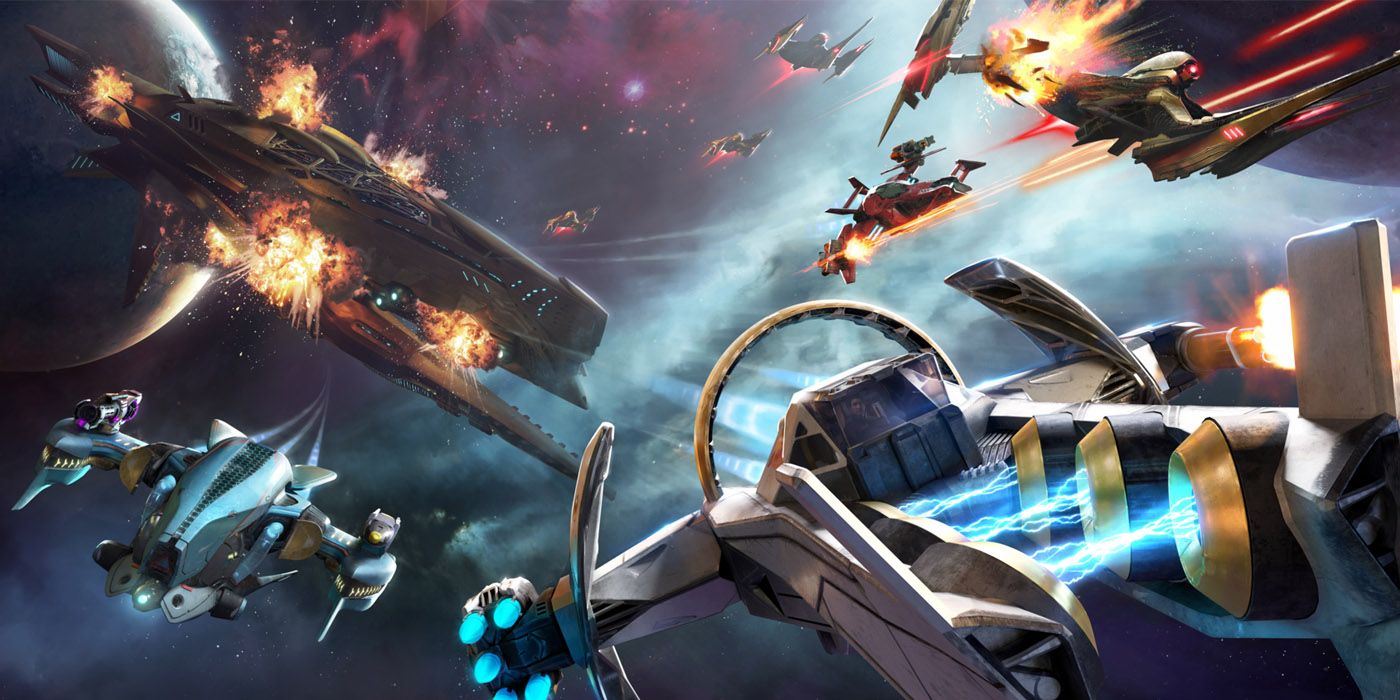
You might know Ubisoft Toronto for their work on Splinter Cell: Blacklist, their first major project after the studio opened in 2009 but since then they've helped develop the Far Cry series, Rainbow Six Siege, Watch Dogs 2, and For Honor while quickly growing in size to nearly 750 people.
Last summer however, Ubisoft Toronto unveiled their first own original IP, Starlink: Battle for Atlas. New IP at a major publisher such as Ubisoft is relatively rare in and of itself, but Starlink does a lot of new things for the publisher. It brings them into the space games genre, in a fully simulated and totally original star system, and it does so with a new take on the risky toys-to-life genre where players mix and match pilots, ships, wings, and weapons to customize their starship for combat and puzzle solving.
Related: Star Fox Makes Ubisoft's Starlink A Must-See
And, as was well publicized at E3 2018, Ubisoft has partnered with Nintendo yet again for another special crossover - one that brings Star Fox into the fold on the Nintendo Switch version of the game. At a preview event hosted by Ubisoft Toronto we sat down with Starlink: Battle for Atlas's game director Richard Carrillo to talk about the potential new franchise.
Hi Richard, can you start by tell me about your day-to-day as Game Director on Starlink: Battle for Atlas?
Richard Carrillo: My day to day is really bringing the entire game play experience together. Kind of giving direction on the experience as it's going to go, the game loops, and really all the game play you feel in the game.
And how long have you been on this project for?
Richard Carrillo: I've been on this project for three years.
And it's been in the works for five years?
Richard Carrillo: About five.
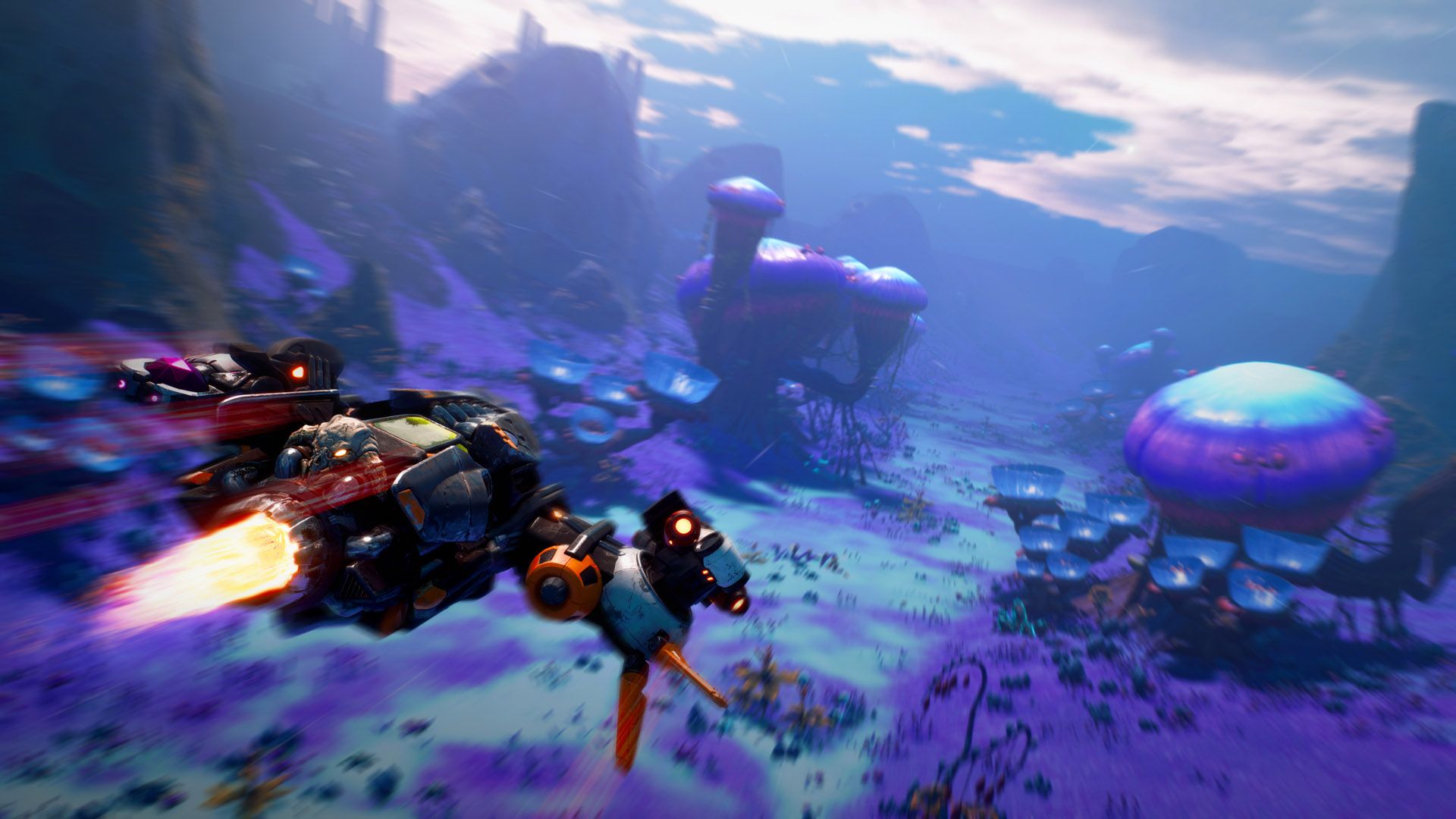
I brought my brother and my best friend here for this event, specifically because this game feels like it’s made for us. This is the type of game we always wanted as a kid growing up. We played the Rogue Squadron titles together, when they had the co-op mode, Star Fox on N64. But the original SNES version was something special. Did you play those type of games growing up? And what sort of other space shooters, or adventure or flying games were inspirations for this experience?
Richard Carrillo: Yeah, definitely. I mean, as you kind of mentioned, Rogue Squadron was huge. And one of the biggest ones for us was Star Fox in terms of finding inspiration. One of the biggest compliments we get is, is this game feels like Star Fox open world. Without even looking at the character in the game. They're playing it on Xbox. But that's what’s coming out of their mouth. And that's a huge compliment for us. That feel of it.
The nature of the three Cs, the nature of the combat, it's definitely what we were going for. Bringing up that fantasy every time. We don't even realize it. That subconscious kind of thing as you're making the game. And just try and make it feel great. Trying to make it feel like this great open world that you can go anywhere. You have this freedom to do anything. It’s definitely of the open world aspects of a lot of Ubisoft games out there, of course. And then you have the combat and and dog-fighting style of Star Fox and those types of games.
Starlink not only feels unique because of the genres it hits but it's also a totally original IP which we’re in dire need of. It's also a totally unique spin on the toys-to-life genre because you're building with the physical aspect of it. Can you talk about what sort of learnings or takeaways you got from the other toys-to-life games (Disney Infinity, or Skylanders, and LEGO Dimensions) and what you wanted to do differently with this?
Richard Carrillo: Definitely, for Starlink: Battle for Atlas, one of our biggest goal-- two big goals, for us in terms of innovation into this market, into this genre. One of course being the modular starship. When we started early prototypes and started putting that sort of mindset of like, ‘What's cool, what's fun, what could be the next big game?’ We had probably 100 or so different pitches of games. This was a time where there was less than 20 people on the team and it was just a massive brainstorm. Anything goes.
That's cool.
Richard Carrillo: What's cool, what's interesting [is that] they even launched a different game-- not launched it, but showcased it at Nuit Blanche in Toronto. It was called Shadow Area. And it was just using the Kinect and really doing crazy things with your body to make shadows appear. And you're trying to paint with your shadows and [there were] tons of mini games with that. And this was kind of like that free for all. What could be cool? It could be interesting. Let's prototype it in a week. Does it work, does it not work? And this type of experience just worked for us. It was one of those experiences where, when you think about it, you're like, ‘Oh, that's risky.’ But when you feel it, you just fall in love with it.
So, that innovation of the modular starship mounted directly on the controller, so it feels like you're controlling your ship, is a big piece that we're bringing to the market. And on top of that, of course this open world experience. And when you play a lot of the games in the market, we like to say is we don't want to talk down to kids. We want to really be that gamer kid type of game that they want to evolve into. They're looking for that next big challenge. And we don't want to build that game that everyone thinks kids should be playing. Or don't-- Maybe they don't have the skill to play older games. We want to be that game that everyone kind of wants to play. Whether it's adult, whether it's kids, we’re more about skill level than about age groups.
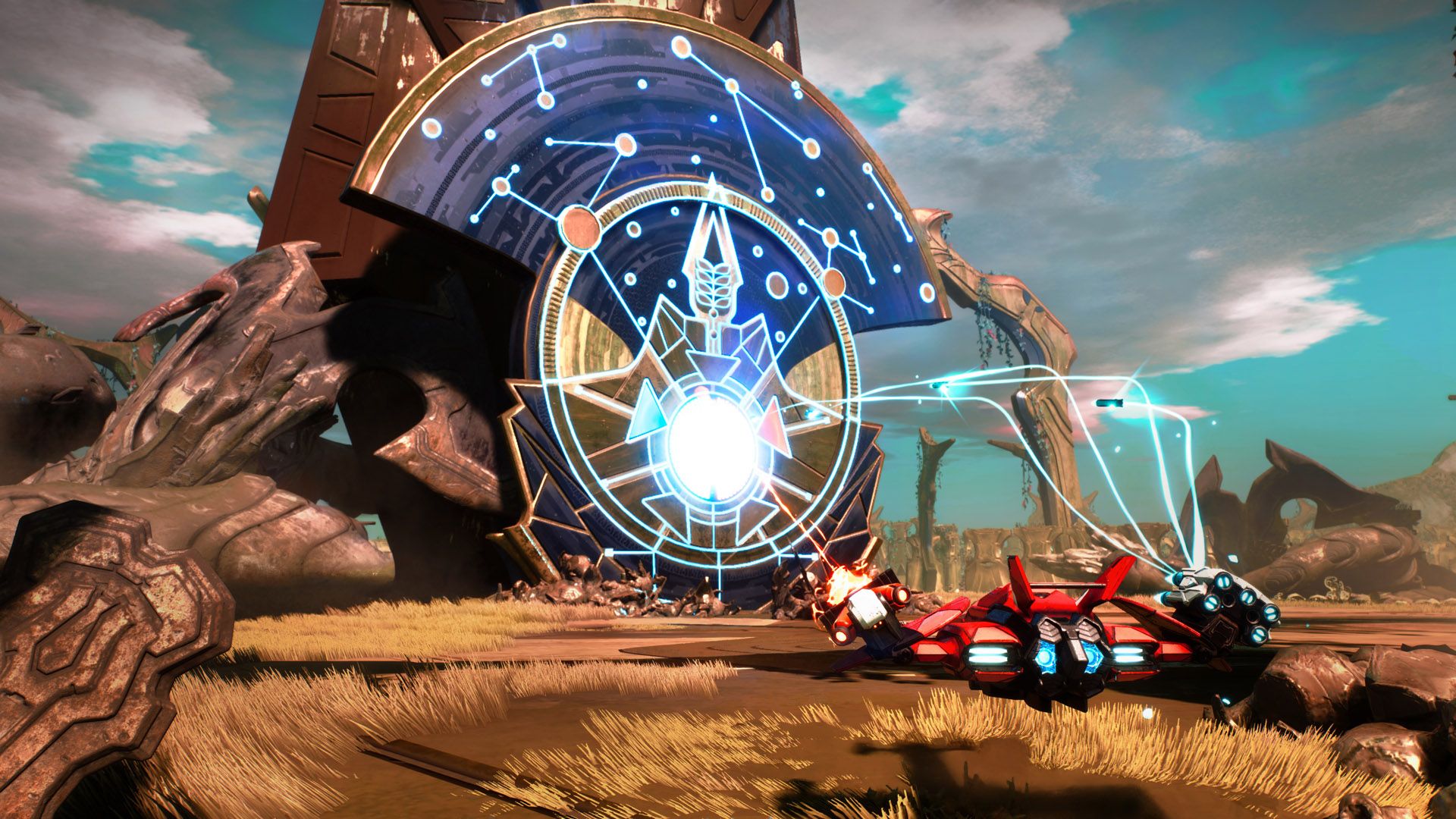
I understand how Star Fox came into it later in the game. But how did you guys integrate the characters, the lore, into the original Atlas universe you guys built?
Richard Carillo: In terms of their lore in our world, is what you're asking?
Yeah. How did you fit that in? Because there’s story stuff with it. How do you guys fit that into what you guys are doing?
Richard Carrillo: We've got two hours of mission content for Star Fox in the Starlink Universe. It's really about them being a guest in our world. So, we don't really fit in terms of a timeline of their lore. It's more than being a guest in our world and all their characters being a guest in our world and sort of playing a story in our world through those characters. So, two extra hours of content strictly on trying to track down Wolf, who is a sort of taking control of sort of mercenary groups and being an outlaw in the Atlas universe.
And that's exclusive to the Switch?
Richard Carrillo: Exclusive to the Switch.
Are there any opportunities or ideas for that potentially happening for other platforms? Could there be, not Nintendo characters, but PlayStation exclusive stuff for PS4, Microsoft IP for Xbox One?
Richard Carrillo: Yes. We don't have anything to announce on that type of front. What I can say is we're really excited about bringing a lot of different cool things that fit in our world, into that world. And we’re excited about anyone that’s in love with our IP. And we're in love with their IP and making that kind of connection like we did with Star Fox.
Even outside of IP potential, for collectors out there, can they expect lots of new ships and characters or weapons long-term?
Richard Carrillo: Yes, post launch we’ll definitely be supporting this game. Post launch plans, we've got free content coming out to keep players invested. Keep them excited about the Atlas universe. Of course, on top of that, more peripherals coming out in the future. Not so much announced beyond that. But, we'll definitely be supporting this game in the future.
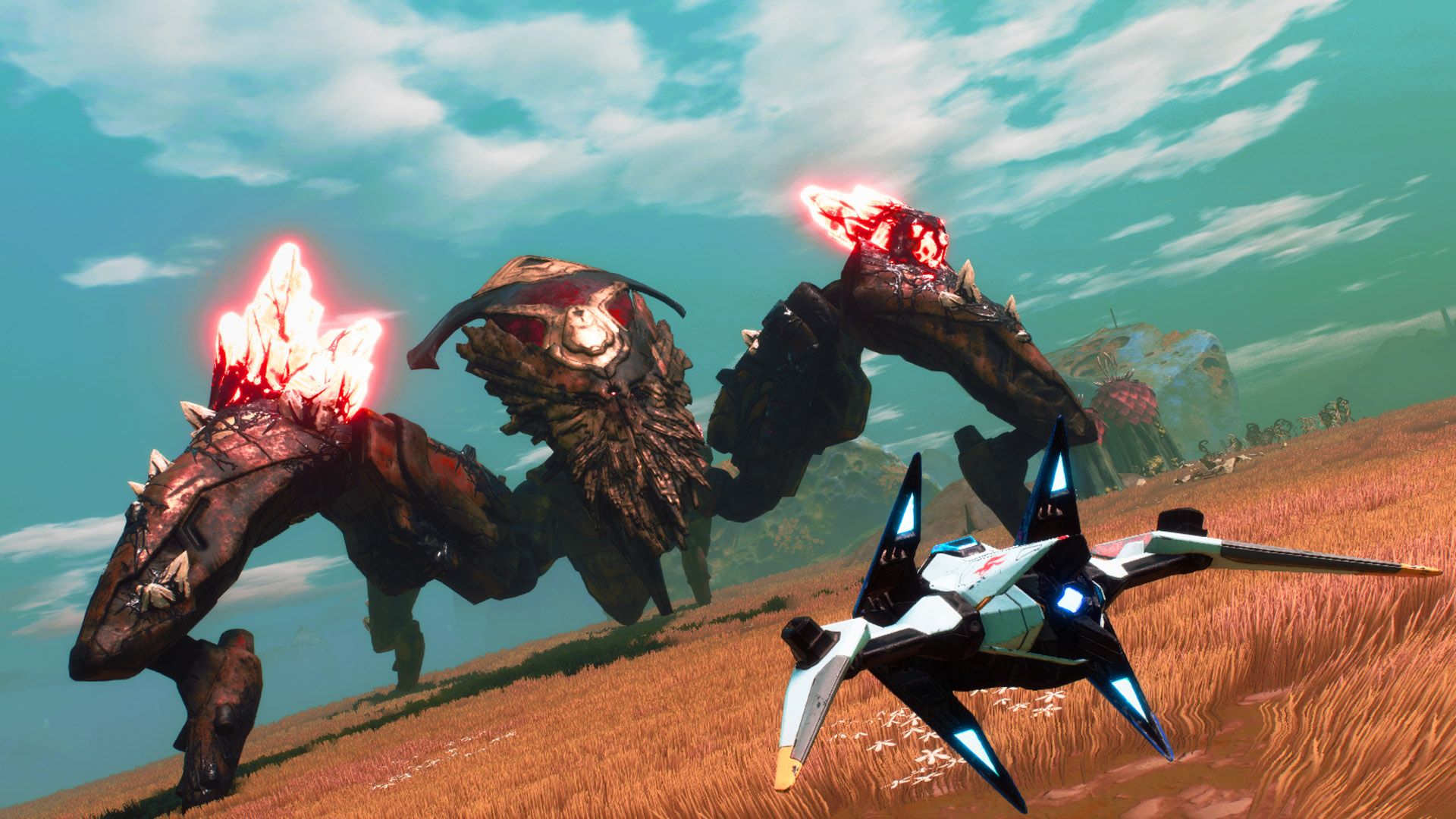
For the lore, can you tell me a little bit about the Legion (the antagonists) and how they fit into this? How you designed and landed on that idea?
Richard Carrillo: So, the Legion is sort of a military group of this ancient warden race, from thousands of years prior. And the wardens have all disappeared and the Legions are this remnant of Legion, exist around Atlas, sort of as statues. And that fantasy that they’ve been there for thousands of years. No one knows how to turn them on. And all of a sudden, I think 60 to a hundred years before our heroes gets to Atlas, all the Legions start turning back on.
This is where the character Grax comes into the picture. He believes he's the second coming of the wardens and found this key that can really turn these machines back on. He ends up kidnapping St. Grand because St. Grand knows how to make Nova, which is what makes faster than light travel possible.
There's a main currency in our game called Electrum. And Electrum is this a material that can be refined into Nova. No one knows how to do that. No one since the wardens. So, all this comes together, that Grax starts to control the Legion, turning them back on. The Legion were really built to mine Electrum and obviously be a military force. And be self-sustaining and basically mine their own power source. So, turning them back on to get that power source growing and he can instantly start building a bigger and bigger army.
When my guys played at E3, when you go through all the gameplay walkthroughs and trailers, there’s a lot hints about finding secret areas and uncovering mysteries. Can you talk about, from a lore perspective, what kind of things they're looking for? Is it all kind of lore stuff they can be finding in these sort of secret areas?
Richard Carrillo: Yeah. So, on all planets there's different types of warden ruins. Again, from that ancient race thousands of years ago. You'll find different elemental puzzles. And different puzzles we say, they're Masters of Elements. And you'll be able to unlock the wardens’ secrets through our database. So, you’ll be able to read more about the lore and the history of the world. And on top of that, of course, cool mods for your ship that'll unlock different powers. And as I said, there are the Masters of Elements, so they'll give you a lot of stat boosts and different new abilities that have to do with elemental combos and different elements in the game.
So, that's just the wardens. There is also hundreds of years prior to our heroes getting to Atlas. There was an Electrum rush similar to the American gold rush. And this is everyone going to Atlas because they found Electrum everywhere when they found the star system. So, you'll see ruins from hundreds of years ago. Sort of refineries and different outposts and villages that are all abandoned now because the Electrum rush has died out. You'll get to explore those ruins too and find unique secrets there.
This is specifically about this special star system, especially unique. Is there much talk or reference to like the other star systems or where they came from originally?
Richard Carrillo: A small amount of talk on those, yes. But this game focuses on the Atlas Star System.
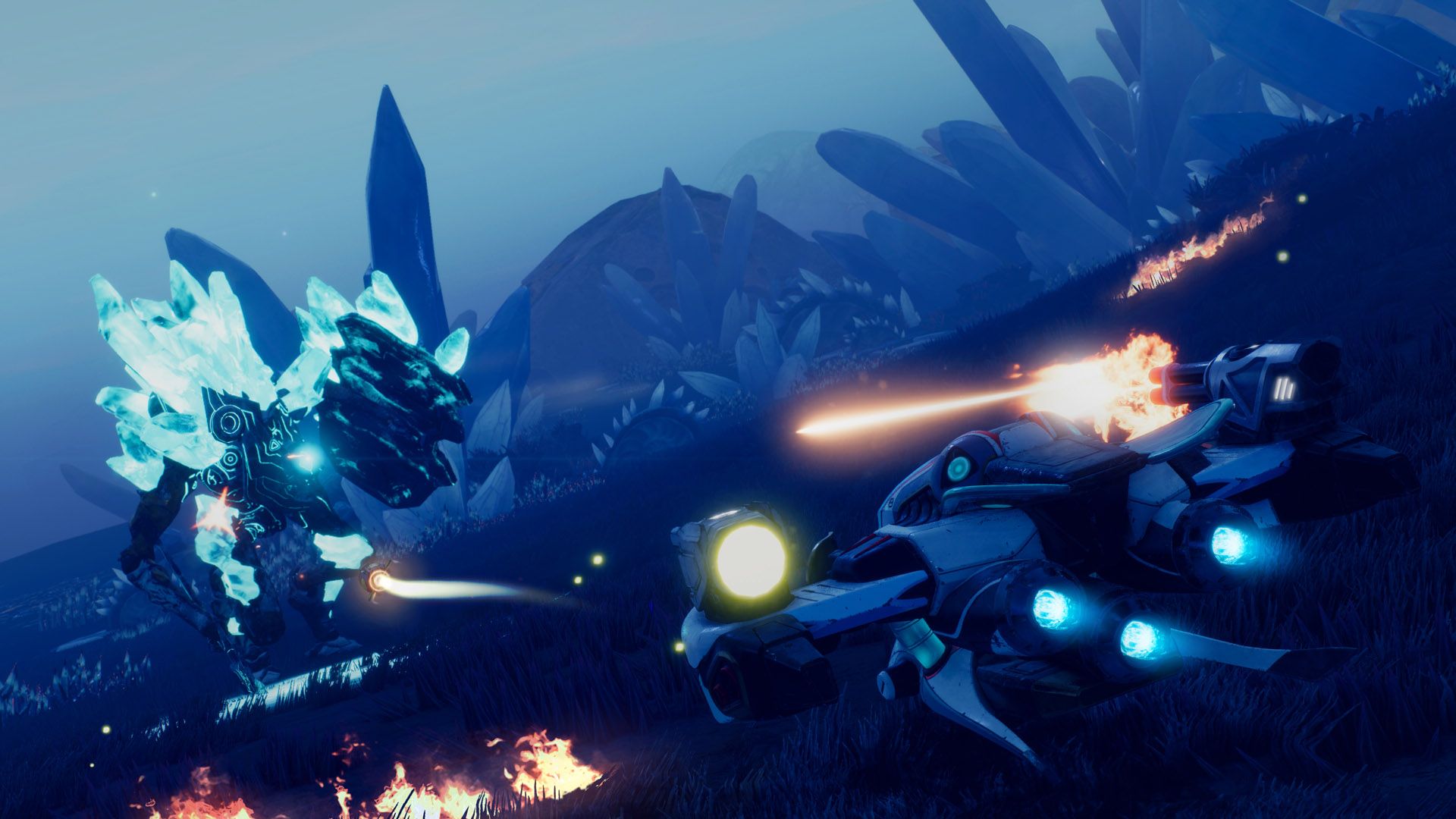
Obviously, the unique mechanic is the building, modifying on the go. But in terms of the gameplay side of it, what was the biggest challenge or obstacle you guys had to overcome over the last couple of years? And the thing that you're most proud of? That, ‘I wanted this in the game, it happened,’ sort of thing.
Richard Carrillo: One of the things I'm most proud of and was very difficult to really get balanced is the simulated world as it stands. One of our big goals as a team was to make sure that everything in the world had a purpose. We didn't spawn a bunch of enemies, and you took out those enemies, and okay, we're going to spawn some more. Our goal was that everything was coming from somewhere. Everything was going somewhere to go do something. So, if you end up taking out an enemy threat, that enemy threat was on its way to go destroy an outpost that may have been an ally or may be one of your future allies. And they were coming from an extractor, that spawns these units to go out and take over more territory. And that extractor now needs to spend time building another unit, it spent resources.
And then of course, by taking out that unit, I'm able to find that outpost and take out the extractor. Take that out and work your way up the chain. There's an entire hierarchy to how the system works. There are these giant capital ships, that are spawning these giant primes, that are walking around the planet planting extractors, that are spawning units, that are taking out outpost. And you can work your way up and everything is simulated. So, if you're on one planet, taking them down, there on six other planets, trying to take them over in real-time. And you're trying to build up an alliance so that they can defend the planet while you're not there. And all those different faction units and that alliance are also moving around doing their jobs and building their outposts and make it even stronger.
One last question. What's the best ship?
Richard Carrillo: It really depends on what you're talking. If you'd like speed--
I don’t need this PR speak, I just want to know what the best ship is. Your favorite then, personal favorite.
Richard Carrillo: [LAUGHS] My personal favorite ship isn't Nadir. It's Shaid’s ship. It's an outlaw ship. The biggest reason I love, not only does it look really cool, it sounds really cool. And that's why I love that ship. It's the fastest ship in a straight line. It's a rocket-class. I love that speed. But with that speed comes this visceral motorcycle sound that outlaw ships have. And it just feels good when you're using it because of the audio guys. What they did, was a great job with that ship. So that's my favorite ship.
Thanks man. The game looks awesome.
Richard Carrillo: Thank you. Thank you, very much.
More: Star Fox Racing Game Rumored to be In Development
Starlink: Battle for Atlas releases on October 16, 2018 on Nintendo Switch, PlayStation 4, and Xbox One.
from ScreenRant - Feed https://ift.tt/2ykj0Ap





No comments: